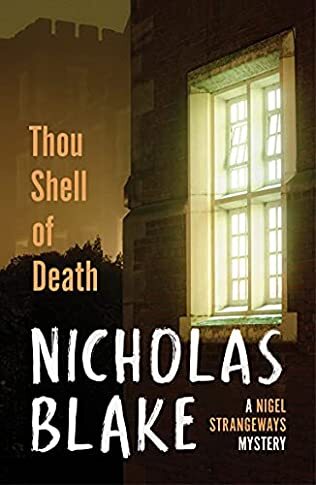Thou Shell Of Death

A review of Thou Shell of Death by Nicholas Blake – 230525
What a wonderful book. I do not know why it has taken me so long to discover Nicholas Blake, the nom de plume of future Poet Laureate, Cecil Day-Lewis, but once discovered, I am thoroughly enjoying the experience. Originally published in 1936, and going by the alternative title of Shell of Death, it uses two hackneyed tropes of the genre – a motley collection of guests invited to a party at a country house and a locked room murder – to set the stage for an engrossing battle of wits to establish the identity of the culprit who sets in motion a chain of events that results in two murders, a suicide, and the butler receiving a serious blow to the back of the head.
Fergus O’Brien, who had an illustrious record as a dare-devil pilot in the First World War and has now retired to develop a new type of plane, has received death threats, suggesting that he will be murdered on Boxing Day. To establish who is threatening him and to head off the attempt to kill him, O’Brien invited those whom he suspects of having some animus against him to a Christmas gathering. Having alerted the police, Nigel Strangeways, Blake’s go-to amateur sleuth, is sent down by his uncle, who happens to be the Assistant Commissioner, to ensure that O’Brien comes to no harm.
Strangeways fails spectacularly in his mission as O’Brien is found dead in a hut in the grounds, where he had intended to sleep to put his would-be assassin off the scent. There had been a dusting of snow and there is one set of footprints, leading to the hut but no sets showing someone leaving, a reprise, to the delight of fans of Greek mythology, of Cacus’ stratagem to confound Hercules. Who killed O’Brien?
It is a mystery that ultimately seems to have two solutions. One which satisfies the rather bumptious Inspector from the Yard, Blount, seems on the face of it to fit all the clues – Blake in a trip to the distinctly third world Irish countryside discovers a backstory of love thwarted and a lover lost, enough to engender a thirst for revenge – and the unprovoked flight of the suspect and their dramatic Icarus-like plunge into the sea seems to confirm the theory.
However, Strangeways is not convinced as the facts as reconstructed by Blount do not, in the modern jargon, sit easily with the psychological profile of the supposed culprit. Instead, his solution is a much cleverer, darker plot designed to not only wreak revenge for a cruel act of betrayal that drove his lover to kill herself avenge but to implicate others who have incurred the culprit’s displeasure.
Rather like Edmund Crispin’s later Frequent Hearses, the plot is drawn from literature, in Blake’s case a piece of Jacobean Tragedy. Strangeways is put on to the link with the play by a guest remembering O’Brien attributing a quotation from it to Webster rather than Tourneau. Under Strangeway’s reconstruction the slip was deliberate rather than careless but like with cracking a code once a key element has been discovered, unravelling the rest becomes much easier. His knowledge of the play and the knowledge he gains in Ireland leads him to an altogether different conclusion as to what happened.
The book is by no means perfect. Blake writes with humour, but his dialogue can be hard going, especially with his insistence in using dialect which might be for comic effect but do not fit well with the more erudite style of the rest of his prose. Blake is well-read and does not mind showing it, the text peppered liberally with quotations and literary allusions. He pays less attention to characterisation than he might and while we know enough about each of the suspects to assess their likelihood of being involved, this is a book where the cleverness of the plot is its sole raison d’être. I loved it.
Perhaps Blake’s most intriguing character is the eccentric explorer, Georgia Cavendish, with whom O’Brien was having a fling and for whom Strangeways begins to shine a light. His emotions are perturbed because it was her prussic acid that laced the peanut used in the second murder and, logically, she does not have a convincing alibi for either murder. However, not only does Strangeways’ reconstruction absolve her, although she could have been charged with obstruction, but, by the time we next meet Strangeways in There’s Trouble Brewing, he has only gone and married her.



